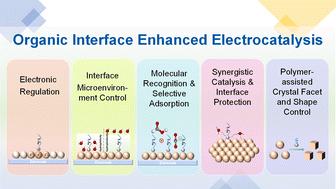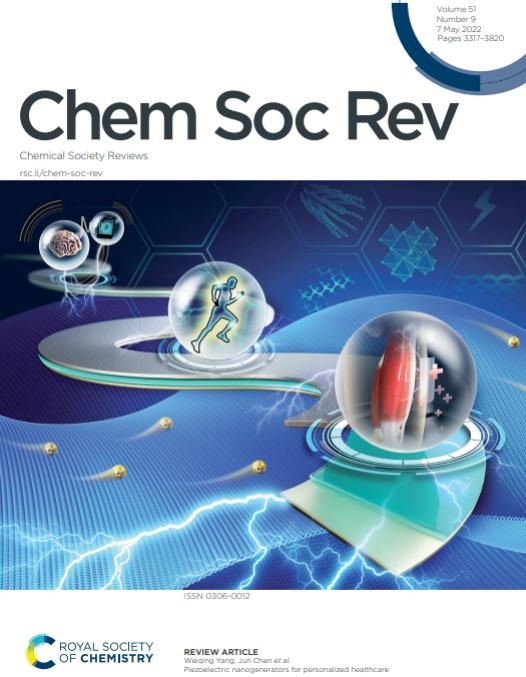Organic interface enhanced electrocatalysis
IF 39
1区 化学
Q1 CHEMISTRY, MULTIDISCIPLINARY
引用次数: 0
Abstract
Organic interface engineering has attracted increasing attention as an effective approach to tailoring electrode surfaces and improving electrocatalytic performance, while a comprehensive understanding of its underlying mechanisms remains limited. This review provides an in-depth examination of the design strategies and functional roles of organic interfaces in electrocatalysis. We categorize organic interfaces into three representative types: (i) small organic molecule-functionalized surfaces, (ii) polymer-modified electrodes, and (iii) self-assembled monolayers (SAMs). Various fabrication methods are discussed, alongside the diverse interaction mechanisms—such as covalent bonding, coordination effects, and van der Waals interactions—that govern the interface between organic components and electrode materials. We then focus on how organic interfaces contribute to catalytic enhancement by modulating local atomic arrangements, tailoring electronic structures, and constructing favorable reaction microenvironments. These interfacial modifications offer new opportunities to optimize catalytic activity, selectivity, and operational stability across a range of electrochemical transformations. Finally, we outline key challenges and future perspectives in applying organic interface strategies to practical energy conversion technologies. This review aims to bridge existing knowledge gaps and offer conceptual and methodological guidance for the rational development and design of high-performance electrocatalysts through molecular-level interface engineering.

有机界面增强电催化
有机界面工程作为定制电极表面和提高电催化性能的有效方法,越来越受到人们的关注,但对其潜在机制的全面理解仍然有限。本文综述了有机界面在电催化中的设计策略和功能作用。我们将有机界面分为三种代表性类型:(i)小有机分子功能化表面,(ii)聚合物修饰电极和(iii)自组装单层(SAMs)。讨论了各种制造方法,以及各种相互作用机制,如共价键、配位效应和范德华相互作用,这些相互作用控制着有机组分和电极材料之间的界面。然后,我们将重点关注有机界面如何通过调节局部原子排列、定制电子结构和构建有利的反应微环境来促进催化增强。这些界面修饰为优化一系列电化学转化的催化活性、选择性和操作稳定性提供了新的机会。最后,我们概述了将有机界面策略应用于实际能量转换技术的关键挑战和未来前景。本文旨在弥补现有的知识空白,并通过分子级界面工程为高性能电催化剂的合理开发和设计提供概念和方法上的指导。
本文章由计算机程序翻译,如有差异,请以英文原文为准。
求助全文
约1分钟内获得全文
求助全文
来源期刊

Chemical Society Reviews
化学-化学综合
CiteScore
80.80
自引率
1.10%
发文量
345
审稿时长
6.0 months
期刊介绍:
Chemical Society Reviews is published by: Royal Society of Chemistry.
Focus: Review articles on topics of current interest in chemistry;
Predecessors: Quarterly Reviews, Chemical Society (1947–1971);
Current title: Since 1971;
Impact factor: 60.615 (2021);
Themed issues: Occasional themed issues on new and emerging areas of research in the chemical sciences
 求助内容:
求助内容: 应助结果提醒方式:
应助结果提醒方式:


